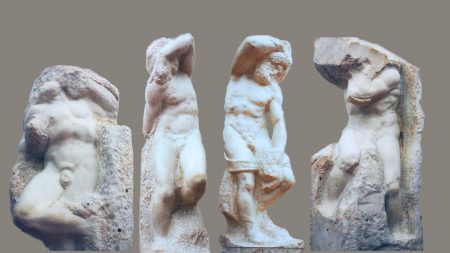Welcome back to “My Thesis in 5 Photos”— a series in which fourth year graduating students share images that illustrate their thesis process—the good, the bad, and especially, the ugly. Here, co-editor of the blog Vala who studies Art and Aesthetics, shares moments from her thesis on Michelangelo’s unfinished sculptures the Prisoners. 1. Haunted by
TagMichelangelo
Discovering Milan and Michelangelo
This year’s trip to Italy, as part of the core course The Florentine Renaissance and its Values, offered an additional excursion to ECLA Academy Year and BA First Year students: a day in Milan.In the course’s history, where students spend several days in Florence at the beginning of the spring term, brief visits to other
The Laurentian Library: experiencing the Renaissance through Michelangelo’s architecture
The Laurentian Library is an official symbol of the growth of power and wealth of the Medici family in Florence. Commissioned in 1523, Michelangelo designed and began working on the building in 1525. In 1535, Michelangelo left Florence and his work was finished, based on his designs, by Ammannati, Basari and Tribolo. The Library remains
ECLA Italy Trip
In the dawn light of Sunday, March 15, the 35 AY students embarked on a mission to trace the beginning of the Renaissance by exploring its heart — Florence. By the time the plane landed in Rome, everyone was full of excitement about what was yet to come. On our way from Rome to Florence,
Florence Trip
Early morning on Sunday 9th March our bus left for Florence and after only a couple of hours we were already analysing the frescoes of Perra della Francesca in the medieval city centres of Pienza and Arrezzo. The Florence trip was to allow students to place the studied material in its context so the days
Lynn Catterson on Renaissance Sculpture
As part of the introductory week of the winter term, ‘Art, Politics, and Morality in the Florentine Renaissance’, ECLA featured two inspiring guest lectures by Professor Lynn Catterson from Columbia University. On 8 January Professor Catterson’s lecture ‘Disrobing the Body Sculpted’ introduced the history of sculpture, in particular its various styles and their movement with

